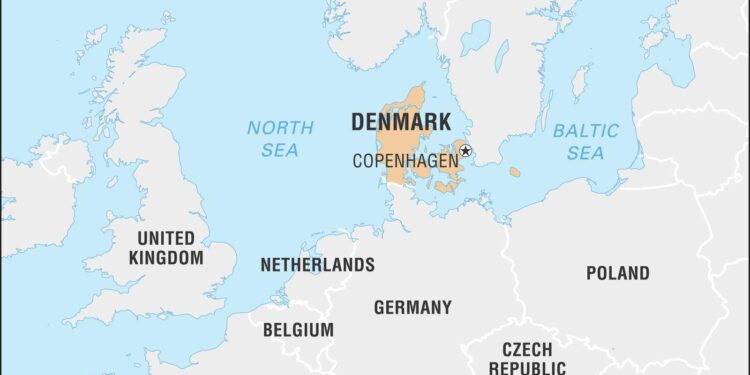Denmark’s economy demonstrates notable resilience in the face of recent job cuts announced by pharmaceutical giant Novo Nordisk, a key player in the country’s labor market. Despite the reduction in workforce by one of its largest employers, the Danish economy continues to show stability, supported by diverse sectors and strong governmental policies. This development highlights the underlying strength of Denmark’s economic framework amid challenges within the global pharmaceutical industry.
Denmark’s Economic Stability Tested as Novo Nordisk Announces Job Reductions
Despite the recent announcement by Denmark’s pharmaceutical giant, Novo Nordisk, regarding significant job reductions, the country’s economic foundation remains remarkably robust. Experts attribute this resilience to Denmark’s diversified industrial base and proactive labor market policies. While the layoffs pose immediate challenges to affected communities, the broader economic indicators show steady growth in sectors such as technology, green energy, and manufacturing, which continue to attract investment and foster employment opportunities.
The Danish government has responded swiftly with targeted support programs aimed at retraining displaced workers and stimulating entrepreneurship. Key highlights of Denmark’s economic response include:
- Upskilling Initiatives: Government-funded courses to prepare workers for emerging job markets
- Support for Startups: Enhanced access to grants and low-interest loans for new businesses
- Infrastructure Investments: Boosting digital and green infrastructure to secure future growth
| Sector | Growth Rate (2023) | Employment Change |
|---|---|---|
| Green Energy | 5.8% | +12,000 |
| Technology | 4.3% | +8,500 |
| Pharmaceuticals | 1.2% | -3,200 |
| Manufacturing | 3.0% | +4,100 |
Analyzing the Impact of Pharmaceutical Sector Shifts on National Growth Prospects
Recent changes within Denmark’s pharmaceutical industry, particularly the job reductions announced by Novo Nordisk, have raised questions about their long-term effects on the country’s economic trajectory. Despite these shifts, Denmark’s diversified economic framework has shown remarkable resilience, leveraging strengths in technology, renewable energy, and manufacturing sectors. Analysts point to the government’s proactive measures, such as investing in innovation hubs and workforce retraining programs, which have helped cushion the blow for affected workers while maintaining national growth momentum.
Examining the broader economic data reveals a nuanced picture. The pharmaceutical sector remains a significant contributor to Denmark’s GDP, but the evolving global market dynamics have pushed the country to adapt swiftly. Key factors supporting stability include:
- Government incentives fostering research and development outside traditional pharma.
- Strategic partnerships between academia and industry that spur innovation.
- Export diversification that reduces reliance on pharmaceutical revenues alone.
| Sector | Growth Rate (2023) | Employment Change |
|---|---|---|
| Pharmaceuticals | 2.1% | -5,000 |
| Renewable Energy | 6.5% | +3,200 |
| Information Technology | 4.8% | +4,800 |
Policy Recommendations to Strengthen Workforce Adaptability and Sustain Economic Resilience
To reinforce Denmark’s position as a global economic leader despite recent setbacks, policymakers must prioritize initiatives that promote workforce agility and continuous skill development. This involves expanding access to lifelong learning programs, particularly in emerging sectors like green technology and digital innovation. Strengthening partnerships between government agencies, educational institutions, and private enterprises can create a dynamic ecosystem where workers can seamlessly transition between industries. Additionally, enhancing social safety nets will support affected employees, ensuring they can reskill without financial hardship, thereby maintaining consumer confidence and domestic demand.
Moreover, targeted investment in regional economic diversification will reduce vulnerability to shocks tied to any single company or sector. Encouraging entrepreneurship and SMEs through simplified regulatory frameworks and financial incentives can cultivate a robust job market that absorbs displaced workers. The table below summarizes key policy areas and their intended impacts, reflecting a holistic approach to economic resilience in an evolving labor landscape:
| Policy Area | Focus | Expected Outcome |
|---|---|---|
| Lifelong Learning | Upskilling & Reskilling | Increased employment flexibility |
| Social Safety Nets | Unemployment benefits & transition support | Reduced economic uncertainty |
| Entrepreneurship Support | Regulatory ease & funding access | Boosted small business growth |
| Regional Diversification | Sectoral and geographic balance | Lowered systemic risk |
The Conclusion
As Denmark navigates the ripple effects of Novo Nordisk’s recent job reductions, its broader economic outlook remains notably resilient. Diversified industries, strong fiscal policies, and ongoing investments in innovation continue to underpin the nation’s stability. While challenges persist, Denmark’s ability to adapt and evolve will be critical in sustaining growth and safeguarding employment opportunities moving forward.
















